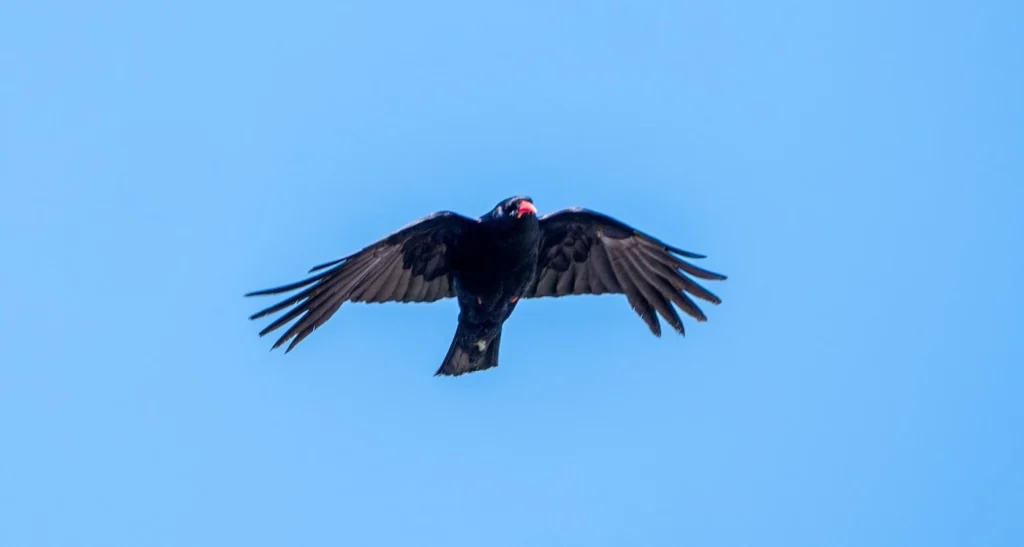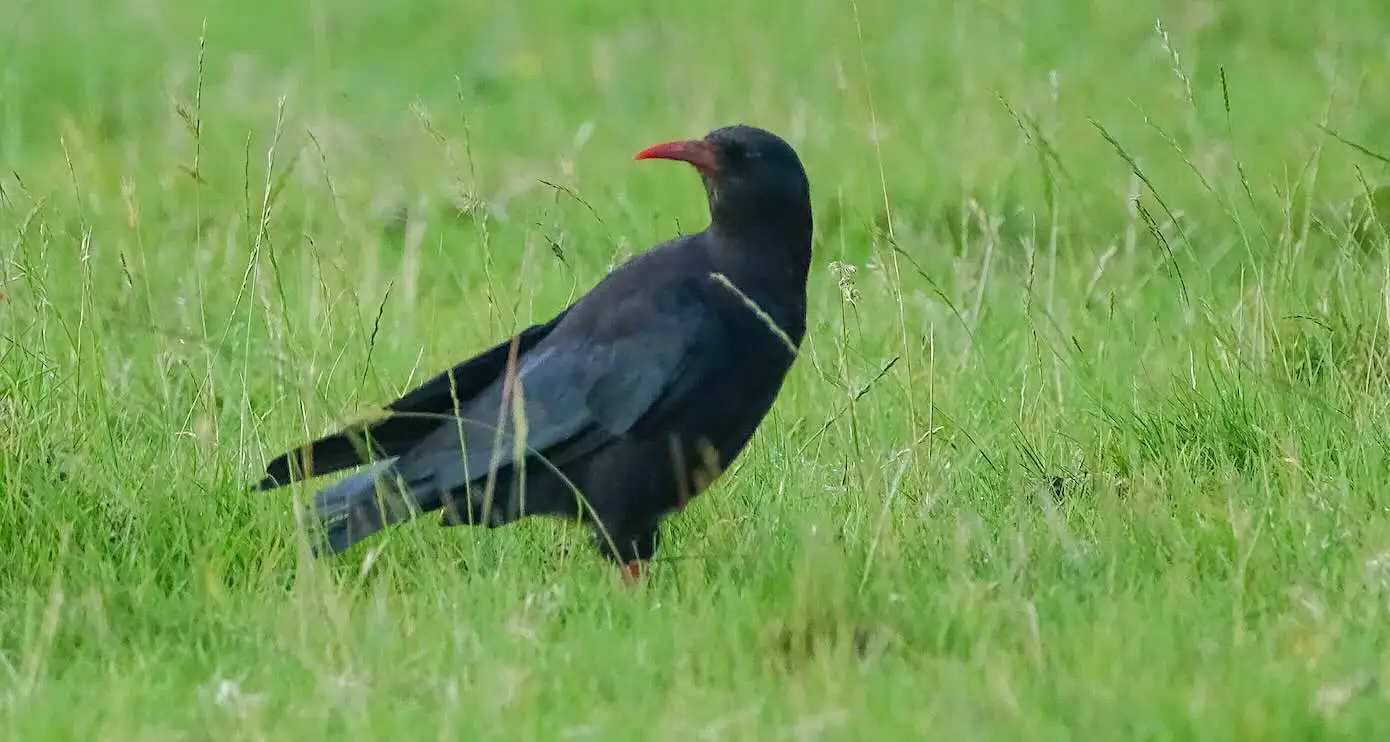Red-Billed Chough Returns to Kent Skies After 200 Years
For the first time in more than two centuries, a wild-born red-billed chough (Pyrrhocorax pyrrhocorax) has taken flight in South East England. The historic moment took place in Dover, Kent, where a young chough successfully fledged from a wild nest.
A Historic Milestone for Kent’s Wildlife
The event marks the first time in over 200 years that a red-billed chough has lived independently in the wild in Kent. Conservationists say this fledging proves the birds are beginning to re-establish themselves naturally in the region.
Liz Corry, Chough Release Supervisor at Wildwood Trust, described the moment as a major breakthrough:
“To see a wild chick not only hatch but fledge and take to the skies is a major step forward. It confirms that the birds are finding suitable nesting habitat and pairing up to raise young—exactly what we’ve been working towards.”

Why Did Choughs Disappear from Kent?
Once common in the county, choughs vanished from Kent more than two centuries ago, primarily due to habitat loss. Despite their disappearance, the species remained a cultural symbol in the region, appearing on the coat of arms of Canterbury and in the legend of Thomas Becket, whose martyrdom was said to have stained the bird’s beak and legs red.
Dover Castle Nest Produces First Wild Chick
Earlier this year, conservationists discovered a chough nest at Dover Castle. The young chick successfully fledged last month, a symbolic and ecological triumph for the county.
This success comes just three years after the launch of an ambitious reintroduction program, led by Wildwood Trust, Kent Wildlife Trust, and Paradise Park.
A Five-Year Conservation Plan
The reintroduction project aims to release up to 50 red-billed choughs into South East England. This effort is part of a larger strategy to reconnect fragmented chough populations across southern England, coordinated with Natural England and other partners.
Habitat Restoration: The Key to Success
The return of choughs is closely tied to decades of work restoring chalk grassland habitat in East Kent. This rare habitat is one of the UK’s most biodiverse, supporting wildflowers, insects, and invertebrates that are crucial food sources for choughs.
Paul Hadaway, Director of Conservation and Engagement at Kent Wildlife Trust, emphasized:
“A thriving chough population in Kent not only revives a lost species, it also proves the value of restoring rare habitats like chalk grassland, which are vital for a huge range of wildlife.”
Grazing livestock play a key role in maintaining this landscape, as the insects found in animal dung are essential for chough chicks during breeding season.
Funding and Support
The project received initial funding from the Natural England Species Recovery Capital Grant Programme, which supported the work for 18 months. Additional contributions from conservation groups and public donations through the Chough Appeal have ensured the project’s continuation.
Why the Chough’s Return Matters
- Restores a lost species to Kent after 200 years.
- Strengthens biodiversity by reviving chalk grassland ecosystems.
- Connects Kent to broader UK chough recovery efforts.
- Inspires community engagement and support for long-term conservation.
